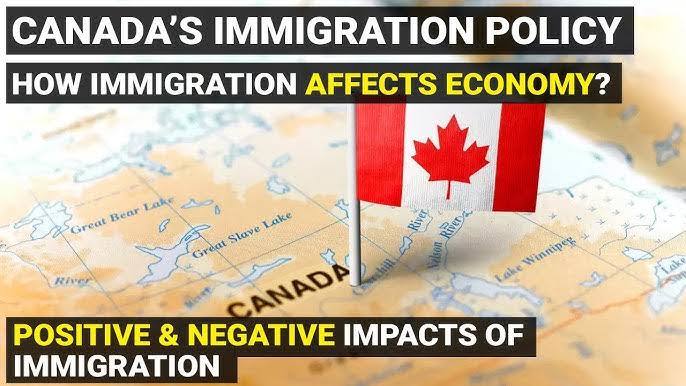The COVID-19 pandemic started in early 2020 and affected economies worldwide, including Canada. More than five years later, in July 2025, Canada is still dealing with its impact. While the worst lockdowns, health crises, and job losses are over, many changes and challenges remain. The pandemic disrupted many areas and pushed Canada to change how it handles work, healthcare, supply chains, and finances.
Although Canada has made significant strides toward recovery, the aftermath of COVID-19 continues to shape its economic landscape. From unemployment fluctuations and government debt to changes in consumer behaviour and business operations, the pandemic triggered a shift that has permanently altered how the Canadian economy functions and grows.
Immediate Economic Fallout and Government Response
The initial economic impact of COVID-19 in 2020 was swift and severe. Public health restrictions, business closures, and travel bans brought much of the economy to a standstill. By the second quarter of that year, Canada’s GDP had shrunk by nearly 12 percent—its worst quarterly contraction on record. Unemployment surged to over 13 percent as service sectors, especially tourism, hospitality, and retail, were hit the hardest.
To cushion the blow, the Canadian government introduced a series of emergency financial relief programs. The Canada Emergency Response Benefit (CERB) and the Canada Emergency Wage Subsidy (CEWS) provided income support for individuals and payroll subsidies for businesses. These programs, along with others such as rent relief and tax deferrals, played a vital role in stabilizing household consumption and preventing mass bankruptcies.
Shifts in Labour and Employment Trends
The pandemic transformed the nature of work across Canada. Remote work, once a niche option, became a necessity during the height of the crisis. As of 2025, hybrid work models are now the norm in many white-collar industries. Large employers and public sector organizations have embraced flexible work arrangements, reshaping the demand for commercial real estate and downtown business activity.
On the other hand, the labour market faced persistent disruptions in service, manufacturing, and frontline industries. Many workers who lost jobs during the pandemic were unable to return to their previous roles due to business closures, automation, or sectoral shifts. The crisis accelerated the need for upskilling and digital literacy, leading to an increase in enrollment in online education and training programs. While employment rates have largely recovered, underemployment and wage stagnation remain concerns in some segments.
Impact on Small Businesses and Entrepreneurship
Small and medium-sized enterprises (SMEs) bore a significant brunt of the economic shock. Many lacked the financial reserves to survive prolonged closures and declining foot traffic. Although federal and provincial relief programs helped keep thousands afloat, a considerable number of businesses closed permanently during 2020 and 2021.
However, the crisis also spurred a new wave of entrepreneurship and innovation. The digital shift led to a surge in e-commerce, digital services, and home-based businesses. By 2025, many Canadian entrepreneurs have adapted to a digital-first marketplace, offering products and services online while reducing overhead costs. Startups in technology, logistics, and remote learning have flourished, demonstrating the resilience and adaptability of Canada’s entrepreneurial spirit.
Real Estate and Housing Market Effects
One of the most debated economic consequences of the pandemic in Canada was its impact on the housing market. In the early months of the crisis, there was widespread concern about falling property values. However, historically low interest rates, changing lifestyle preferences, and urban-to-suburban migration fueled an unexpected boom in real estate.
By 2022 and into 2023, home prices in many cities had reached record highs, further exacerbating affordability issues. While the market began to cool in 2024 due to rising interest rates and government interventions, housing affordability remains a major policy issue in 2025. The pandemic also highlighted the need for more accessible and affordable housing, prompting new investments in public housing and rent control initiatives in provinces like British Columbia and Ontario.
Public Debt and Fiscal Sustainability
The federal government’s pandemic response resulted in a dramatic increase in public spending. Between 2020 and 2022, Canada’s national debt grew by hundreds of billions of dollars. While this spending was necessary to avoid deeper economic collapse, it raised questions about long-term fiscal sustainability.
As of July 2025, the Canadian government is balancing debt management with continued investment in healthcare, green infrastructure, and social support programs. The focus has shifted toward stimulating economic growth and job creation to stabilize the debt-to-GDP ratio. Tax reforms and a renewed emphasis on innovation-led productivity are key components of Canada’s post-pandemic fiscal strategy.
Healthcare System Transformation
The pandemic exposed both the strengths and weaknesses of Canada’s healthcare system. While the country managed to avoid the worst-case health scenarios seen in some nations, the strain on hospitals, long-term care facilities, and healthcare workers was immense. Issues like staffing shortages, supply chain failures, and outdated infrastructure became glaringly obvious.
In response, the federal and provincial governments have increased healthcare funding and prioritized digital health technologies. As of 2025, telemedicine is now a mainstream option, and new investments are being directed toward expanding hospital capacity, improving mental health services, and ensuring pandemic preparedness. The economic impact of these changes is substantial, influencing employment in the healthcare sector and related industries.
Canada’s Trade and Global Economic Position
International trade, a vital part of Canada’s economy, also took a hit during the early stages of the pandemic. Supply chain disruptions, border closures, and a drop in global demand affected key sectors like automotive, energy, and agriculture. However, Canada’s diversified trade relationships allowed it to rebound faster than many other economies.
By 2025, the country has strengthened its trade ties through agreements such as the CPTPP and its bilateral deals with the EU and the UK. The government has also prioritized securing supply chains for essential goods like medical equipment, pharmaceuticals, and semiconductors. As global markets recover, Canada is positioning itself as a stable, resource-rich, and innovation-driven economy.
Long-Term Economic and Social Implications
The pandemic reshaped Canada’s economy in ways that will have lasting effects. Consumer behavior has shifted permanently, with greater reliance on digital services and online transactions. Public expectations around social safety nets, healthcare, and income support have changed, influencing political debates and policymaking.
There is also a renewed focus on inclusive economic growth, addressing disparities that were magnified during the pandemic. Racialized communities, low-income households, and women were disproportionately affected by job losses and health risks. In response, policies promoting equity, diversity, and inclusion are now at the forefront of Canada’s recovery agenda.
Final Thoughts
COVID-19 delivered one of the most profound economic shocks in Canadian history. While the country has made significant progress in recovery, the journey is far from over. The pandemic has forced Canada to reassess its economic foundations, rethink its approach to public services, and build greater resilience in the face of future crises.
As of July 2025, the Canadian economy is gradually stabilizing, with new opportunities emerging in technology, green energy, and healthcare. The lessons learned from COVID-19 continue to guide policy decisions and public expectations, ensuring that the nation is better prepared for whatever challenges lie ahead.



